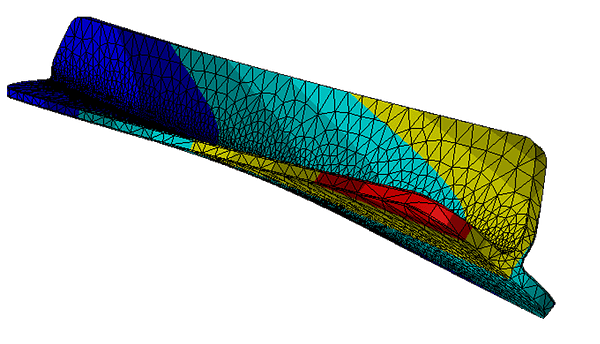Are machining-induced residual stresses causing unacceptable distortion? Need to simulate the influence of cold working sequence for a given hole pattern? Residual stresses (RS) can have a significant impact on the strength, durability and damage tolerance of metallic and composite parts. In the past, reliably simulating RS effects was challenging due to extreme stress gradients, especially in lightweight components.
Residual Stress Applications
RS effects can be beneficial, such as life extension by cold working one or more fastener holes, or detrimental, such as distortion leading to expensive re-working or rejection of large, lightweight manufactured parts. Are you in good shape?
Schedule a Residual Stress Demo
Would you like a no-cost demonstration of our residual stress and distortion prediction engineering application solutions? Complete our Request an Engineering Application Demo form and we will get back to you shortly.

Residual Stress Application Focus
The following are typical residual stress analysis applications which are routinely performed in StressCheck Professional:


Linear Elasticity Solver
Non-Linear Solver
Cold Working Solver


Linear Elasticity Solver
Bulk Residual Stress (BRS) Module
Subsurface Residual Stress (SRS) Module


Linear Elasticity Solver
Fracture Mechanics Module
MeshSim Advanced Automesher
Bulk Residual Stress (BRS) Module
Subsurface Residual Stress (SRS) Module
Would you like to schedule a Residual Stress Analysis Demo?
Would you like to learn more about our features and solutions for cold working and residual stress analysis applications? Schedule a Residual Stress Analysis demo with us by completing the below form and we’ll contact you as soon as possible. Thank you!
Looking for Resources?
Recent News & Events
Quick Links
Testimonials
-
“As frequent StressCheck users we rely on the capabilities and reliability of the program to complete our everyday jobs ensuring safe reliable flights of our aircraft. The layout of the program and documentation allow for a quick learning process and the support ESRD offers is second to none. They take the time to answer the most basic questions as well as working through complex problems to ensure the proper validation of results. The effort they make in satisfying their users needs increase the reliability, functionality, and capability of this great program.”
USAF Engineer
Hill Air Force Base
 Serving the Numerical Simulation community since 1989
Serving the Numerical Simulation community since 1989 






